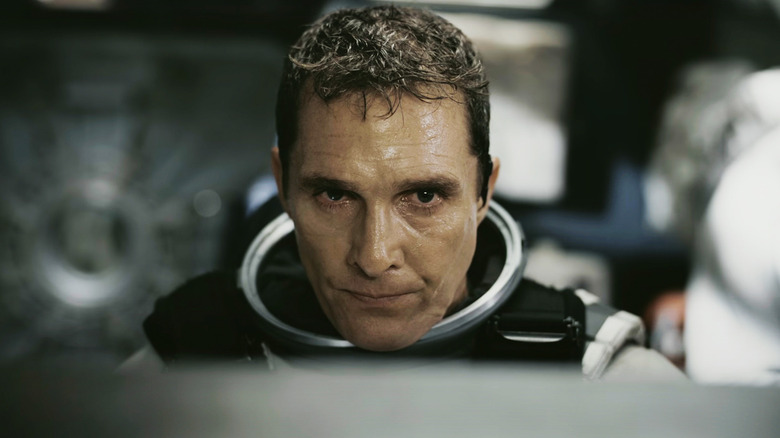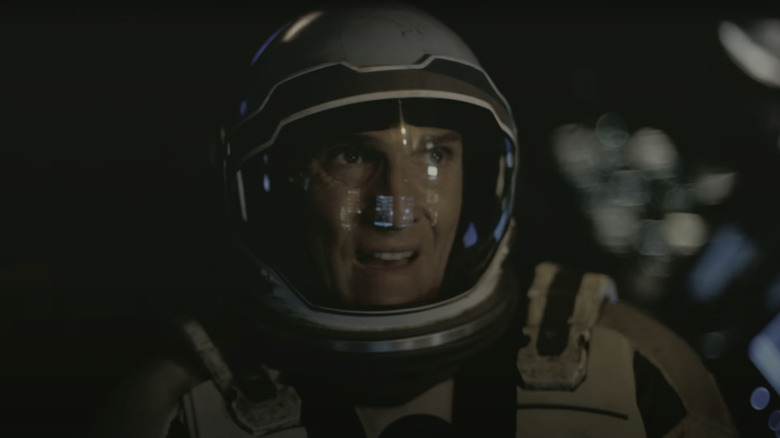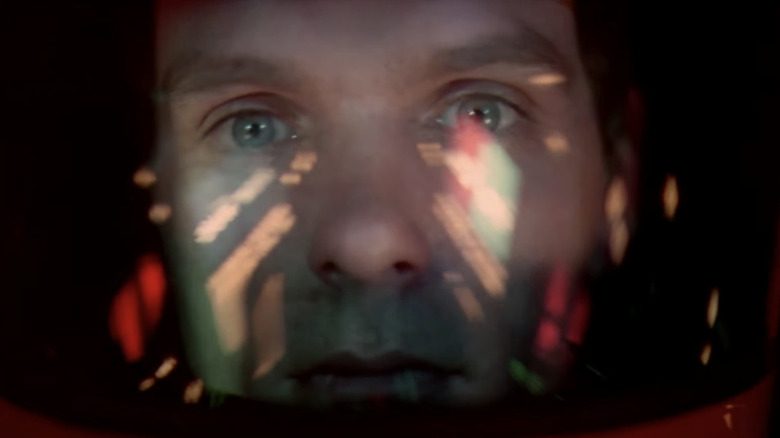
“Oppenheimer” may have become the highest-grossing biopic of all time, and the Dark Knight trilogy may have made Christopher Nolan into a household name, but “Interstellar” is a strong contender for the director’s best film simply because it has more of an emotional core than any of his other projects. By now, it’s fairly well documented that “Interstellar” is somewhat of an outlier among the Nolan filmography in that regard. But the more you think about it, the more impressive it becomes.
A huge, galaxy-spanning space epic that actually sends a man into the singularity of a black hole during its climax also manages to be the most heartfelt and intimate portrait of human connection Nolan has ever wrought. That oddly complimentary dichotomy extends to other areas of the film, too. Just consider how committed to scientific realism Nolan was and how fantastical the events in the movie are. This is a film that not only features a surreal trip over the event horizon of a black hole, but also a planet of perpetual tsunamis. And yet, rather than relying on his own creative ideas for these outlandish moments, Nolan adhered closely to science in order to conjure such seemingly fantastical moments.
That’s really just a testament to the fundamental weirdness of reality beyond our own planet, but it’s also yet another fascinating layer to Nolan’s best movie. As is this: Nolan was so adamant that his sci-fi epic adhere to scientific principles that he hired physicist Kip Thorne to ensure as much. But when it came to that final trip into the heart of the black hole, the director gave himself license to get as strange as he possibly could, not only straying from science into full-on sci-fi but also attempting to emulate a classic of the genre in the process.
The sci-fi classic that guided Christopher Nolan on Interstellar
The fact is that nobody has ever experienced what it’s like to cross the event horizon of a black hole. Even while physicists are fairly clear on what might happen were a human to approach this mysterious cosmological boundary (it involves something called “spaghettification,” which is a lot less fun than it sounds), there is no actual first-hand evidence for what such an experience would be like. So, when Joseph Cooper, or “Coop” (Matthew McConaughey) makes his journey across the event horizon of Gargantua in “Interstellar,” Christopher Nolan was able to take at least some artistic license.
Having relied on the exhaustive knowledge of Nobel prize-winning theoretical physicist Kip Thorne to inform the bulk of the film’s depiction of space and its various oddities, Nolan found himself with some freedom to get creative. Rather than go completely off-book, however, the director swapped out real physics for the legendary ending of Stanley Kubrick’s “2001: A Space Odyssey” as his guide.
Nolan has never made any secret about how indebted he and “Interstellar” are to Kubrick’s film, but rather than simply taking his cues from “2001” for this climactic scene, he actually wanted to recreate the specific feeling of Kubrick’s original. As “2001” draws to a close, Keir Dullea’s David Bowman enters a “Star Gate” that sends him on a surreal journey through time where, after witnessing a psychedelic light show, Bowman encounters older versions of himself before the film ends on the famous final shot of an embryo hovering above Earth. While much has since been written about what this bizarre journey is supposed to mean, it’s safe to say that Kubrick kept things intentionally mysterious in that regard. It’s this that Nolan evidently wanted to outright recreate with Coop’s voyage across the event horizon.
Christopher Nolan wanted to protect the mystery of his 2001 homage
“Interstellar” was inspired by specific childhood experiences, namely Christopher Nolan seeing “Star Wars” and “2001: A Space Odyssey” for the first time. Of these two, Stanley Kubrick’s sci-fi epic was perhaps the most influential on the director, and certainly in terms of “Interstellar.” But even beyond its influence on that film, Nolan has proven his undying appreciation of Kubrick’s work elsewhere, overseeing a 70mm restoration of “2001” alongside a 4K re-release of the movie back in 2018. He’s even gone so far as to say that children should watch “2001” because it is that fundamental to his understanding of cinema.
So deep was the influence of “2001” on “Interstellar” that it seems Nolan not only wanted to emulate the scientifically-informed aesthetics and overall tone of the film, but also wanted to achieve a very specific goal: recreating the movie’s mysterious final scenes. During an appearance on Neil deGrasse Tyson’s “StarTalk” podcast, Kip Thorne once revealed that Nolan told him as much during production, saying, “Chris said to me early on I would like to make a film where the ending is as mysterious as the ending of ‘2001: A Space Odyssey.'” Expanding on his experience, Thorne revealed that Nolan was quite protective of the ending and its “2001”-inspired mystery, only allowing it to be explained in Thorne’s own book, “The Science of Interstellar.” In his own words:
“[Nolan] greatly admires Stanley Kubrick and that film and so somewhat later on as we were talking about the ending, and we had lots of conversations about the ending, he said, ‘Well, you can explain the ending in this book that you’re planning to write.’ […] He identified that as the place where the ending will get explained.”




Leave a Reply